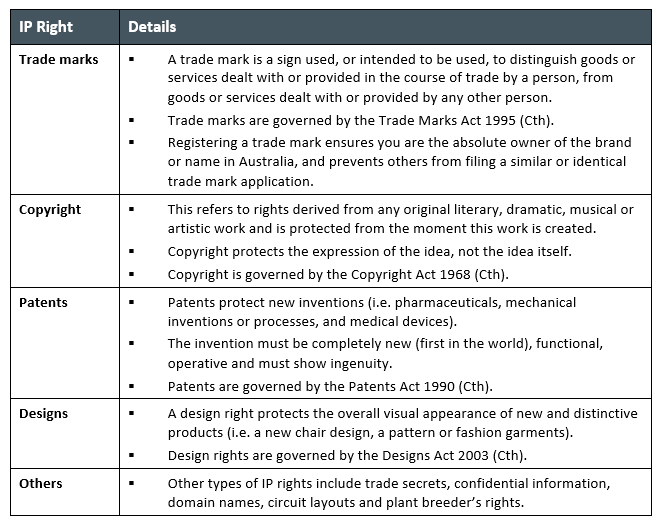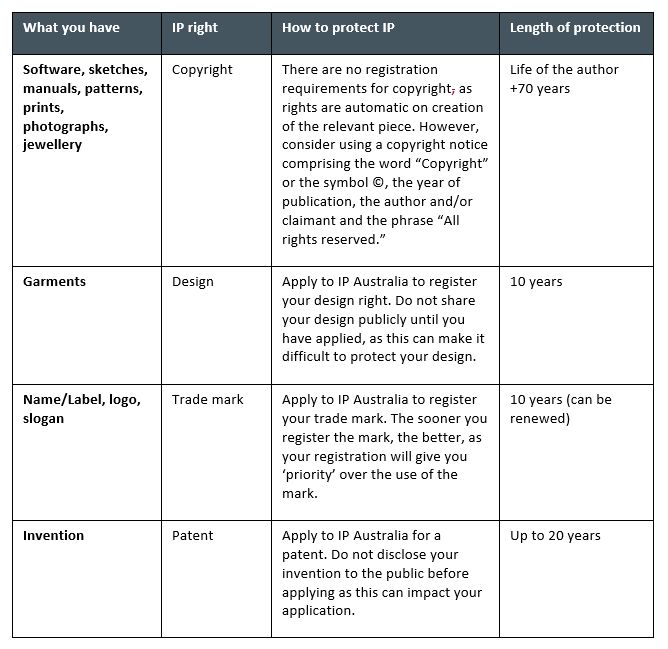
Intellectual property (IP) rights can accrue significant value for companies when managed properly. For example, well-known trade marks such as Apple and Amazon, as a type of intellectual property, are currently valued at over US$350 billion.
In order to realise this value, companies must work to actively identify, register and enforce their IP rights – a failure to do so may result in missed financial opportunities (as demonstrated in the events arising out of the registration and protection of the UGG trade mark in Australia and internationally).
In this article, we provide a step-by-step overview on how to identify, protect, and manage IP rights.
Very broadly, IP means the legal rights which result from intellectual activity in the industrial, scientific, literary and artistic fields. The main categories of IP are set out in the table below.

Now that you are across the basics of IP rights, it is important to identify what IP assets exist in your business. Consider conducting an audit across your business of IP assets that:
Assess what type of IP rights exist in those various IP assets and consider creating an internal register or schedule which that sets out all of the IP assets identified and the status of the IP rights subsisting in those assets. This register will be helpful when it comes to managing your IP rights (see step four below).
Once you have identified your IP rights, it is time to assess what kind of protection those rights can be afforded. Below, we have listed some examples of IP assets and how they can be protected.

Once you have identified and protected your business’ IP rights, you should ensure that appropriate processes are in place to manage them successfully. Key points to consider when managing IP rights include the following:
If you have any questions in relation about the above, or would like to further discuss the protection and management of your company’s IP further, please contact us or send us your enquiry here.
Disclaimer
The information in this article is of a general nature and is not intended to address the circumstances of any particular individual or entity. Although we endeavour to provide accurate and timely information, we do not guarantee that the information in this article is accurate at the date it is received or that it will continue to be accurate in the future.